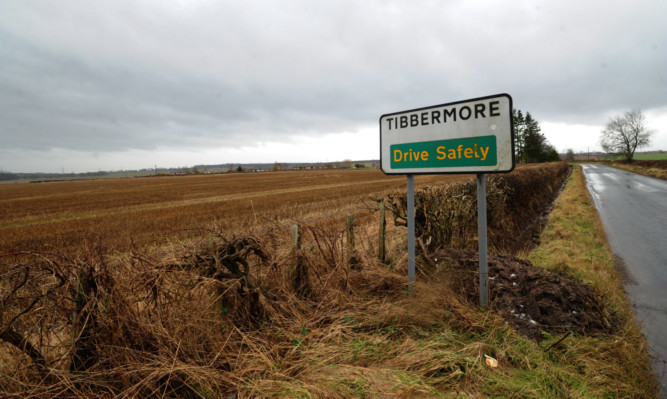A construction firm has gone to war over a rejected housing scheme at an ancient Perthshire battleground.
Ribbon Homes wants to build a new estate at the site of the 17th Century Battle of Tippermuir, near Perth, but the scheme was rejected by Perth and Kinross Council after complaints from residents.
Now the company has called on the Scottish Government to overturn the decision and pave the way for development to begin.
Bosses are also demanding expenses from the local authority, claiming its councillors acted “unreasonably”.
Alloa-based Ribbon Homes applied for permission to build 12 houses on land off Marlefield Grove, Tibbermore, in June last year.
The site is part of the Tippermuir battleground, the scene of a famous 1644 clash between Royalist and Covenanter armies.
The fight is significant as the first victory for the James Graham, the Marquis of Montrose, who became feared and renowned for his tactics on the battlefield.
Although Historic Scotland did not object to the housing plan, the organisation urged planners to consider the development’s impact on the site of “national importance”.
Eight residents objected, arguing against the design of the buildings and claiming the new houses could overlook their properties.
Councillors went against planners’ recommendations and rejected the plan on the grounds that it “does not respect the character and amenity of the place” and represented an “over development of the site”.
In a letter to Scottish Ministers, agents for Ribbon Homes said the bid was acceptable.
It stated: “The proposal is fully supported by the council’s development quality manager and there has been no objection to it from the council’s internal and external consultees. It is compliant with all planning policies.
“The application, however, was refused by the planning committee on the basis it would harm the character of the area, in terms of density and access.
“In our view, there is absolutely no basis in planning policy, national or local, to support such a conclusion.”
A follow-up letter calls for an award of expenses against the council. A spokeswoman for Holder Planning, representatives for Ribbon Homes, said: “In choosing to disregard the officer recommendation for conditional approval, the committee ignored the clear advice from a range of statutory consultees…none of whom objected to the development.
“It is therefore submitted that the council acted unreasonably, that it should never have been necessary for the appellant (Ribbon Homes) to appeal this decision and that they have incurred unnecessary expense and delay in pursuing the appeal.”
A member of the Scottish Government’s planning and environment and appeals division will visit the site of the row later this month.
Officials are expected to deliver their verdict by the middle of March.Beginning of campaign for supremacyThe Battle of Tippermuir was the start of the Marquis of Montrose’s campaign for Charles I against the Covenanter armies of the Scottish Parliament.
The clash took place on an area of flat ground between Perth and the village of Tippermuir, nowTibbermore.
It was the first time thatMontrose, the chief of ClanGraham, fought alongside his Irish ally, Alistair Mac Colla.
They commanded the Royalist army with Lord Elcho in overall command of the Covenanters.
As the Royalists moved within cannon range, the Earl ofTullibardine at the centre of the Covenanter army sent forward foot soldiers and horses, hoping to take advantage of the Royalists’ low supplies of powder and bullets.
But confusion reigned when the Irish skirmishers drove theCovenanters to their own lines.
Montrose then gave the order to charge and his men broke through the first two ranks of undisciplined and inexperienced troops.
The Marquis managed to take control of higher ground and beat back the Covenanters. They eventually admitted defeat and fled towards Perth.
Montrose and Mac Colla went on to lead a series of victories throughout 1644 and 1645 that left Montrose essentially in control of Scotland.
